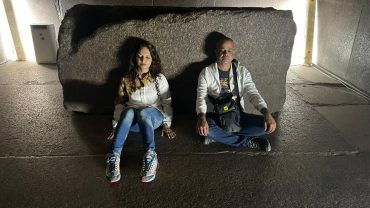Nestled along the eastern bank of the Nile River, the Beni Hasan Tombs stand as silent sentinels, echoing the whispers of a bygone era. This archaeological site, located in Middle Egypt, boasts a collection of rock-cut tombs that provide a captivating glimpse into the lives of the elite during the Middle Kingdom period (circa 2055–1650 BCE). The tombs are a testament to the flourishing art, culture, and socio-economic dynamics of ancient Egypt.
Historical Context
To comprehend the significance of the Beni Hasan Tombs, one must delve into the historical tapestry of ancient Egypt. The Middle Kingdom, often regarded as a period of renaissance, witnessed the flourishing of art and literature. The tombs at Beni Hasan are an embodiment of this cultural renaissance, featuring vivid scenes depicting daily life, religious rituals, and the esteemed status of the tomb occupants. The tombs served as eternal abodes for the local governors and high-ranking officials, showcasing their privileged existence and offering insights into the societal structure of the time.
Architectural Marvels
The architectural prowess displayed in the construction of the Beni Hasan Tombs is nothing short of remarkable. Carved into the limestone cliffs, these tombs exemplify the skilled craftsmanship of ancient Egyptian artisans. The elaborate facades adorned with intricate reliefs showcase the fusion of artistry and spirituality. The tombs are not mere resting places; they are symbolic representations of the journey to the afterlife, adorned with scenes of the deceased engaging in activities they cherished in their mortal existence. This blending of architecture and spirituality provides a unique lens through which we can observe the beliefs and customs that shaped ancient Egyptian society.
Artistic Treasures
One cannot explore the Beni Hasan Tombs without marveling at the artistic treasures within. The vivid frescoes and detailed reliefs breathe life into the stone walls, narrating tales of a bygone era. The depictions of agriculture, hunting expeditions, and family life offer a comprehensive tableau of the daily experiences of the tomb occupants. The artistry also extends to the portrayal of deities and religious rituals, providing a glimpse into the spiritual worldview of ancient Egyptians. Each brushstroke and chisel mark serves as a conduit connecting the modern observer to the rich tapestry of a civilization that thrived millennia ago.
Archaeological Discoveries
The Beni Hasan Tombs continue to be a wellspring of archaeological discoveries. Excavations have unearthed a plethora of artifacts, ranging from pottery and jewelry to tools and everyday items. These findings not only contribute to our understanding of the material culture of the Middle Kingdom but also shed light on trade networks and technological advancements of the time. The meticulous documentation of these discoveries serves as a vital resource for historians and archaeologists striving to reconstruct the puzzle of ancient Egyptian civilization.
Legacy and Cultural Significance
The legacy of the Beni Hasan Tombs extends beyond their archaeological and historical importance. These ancient sepulchers are crucial to our comprehension of the cultural and societal fabric that wove the tapestry of Middle Kingdom Egypt. The tombs not only serve as tributes to the departed but also as repositories of cultural nuances, offering a nuanced view of the customs, values, and aspirations of a people long gone. Their significance resonates in the corridors of time, connecting the contemporary world to the wisdom and artistry of an ancient civilization.
Educational Insights and Academic Pursuits
For scholars and students alike, the Beni Hasan Tombs represent an academic goldmine. The meticulous documentation of the tombs, coupled with ongoing research, provides a platform for academic pursuits across various disciplines. From archaeology and art history to anthropology and religious studies, the tombs offer diverse avenues for exploration. The insights gained from these endeavors not only contribute to our understanding of ancient Egypt but also foster a broader appreciation for the complexities of human history.
Visitor Experience
As visitors traverse the hallowed grounds of the Beni Hasan Tombs, they embark on a journey through time. The site’s open-air museum allows for an immersive experience, enabling visitors to witness firsthand the intricate details of the tomb artistry. The guided tours, supported by informative displays, unravel the layers of history encapsulated within the tombs. The site’s accessibility fosters a sense of connection with the past, making it an educational and enriching experience for visitors of all ages.
Community Engagement and Tourism
The preservation and promotion of the Beni Hasan Tombs are intertwined with community engagement and responsible tourism. Local communities play a pivotal role in safeguarding these heritage sites, acting as stewards of their own history. Initiatives that empower and involve the local population contribute not only to the preservation of the tombs but also to the sustainable development of the surrounding areas. Responsible tourism practices, emphasizing respect for the site and its cultural significance, ensure that the Beni Hasan Tombs can be enjoyed by future generations.




Comment (0)